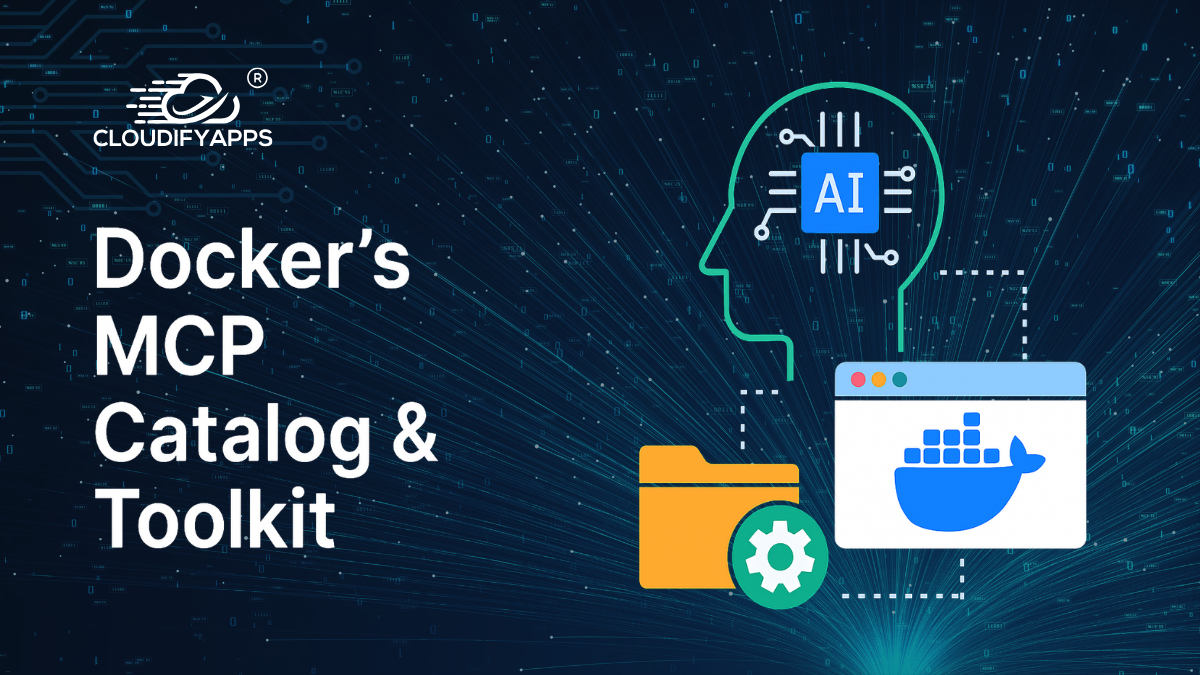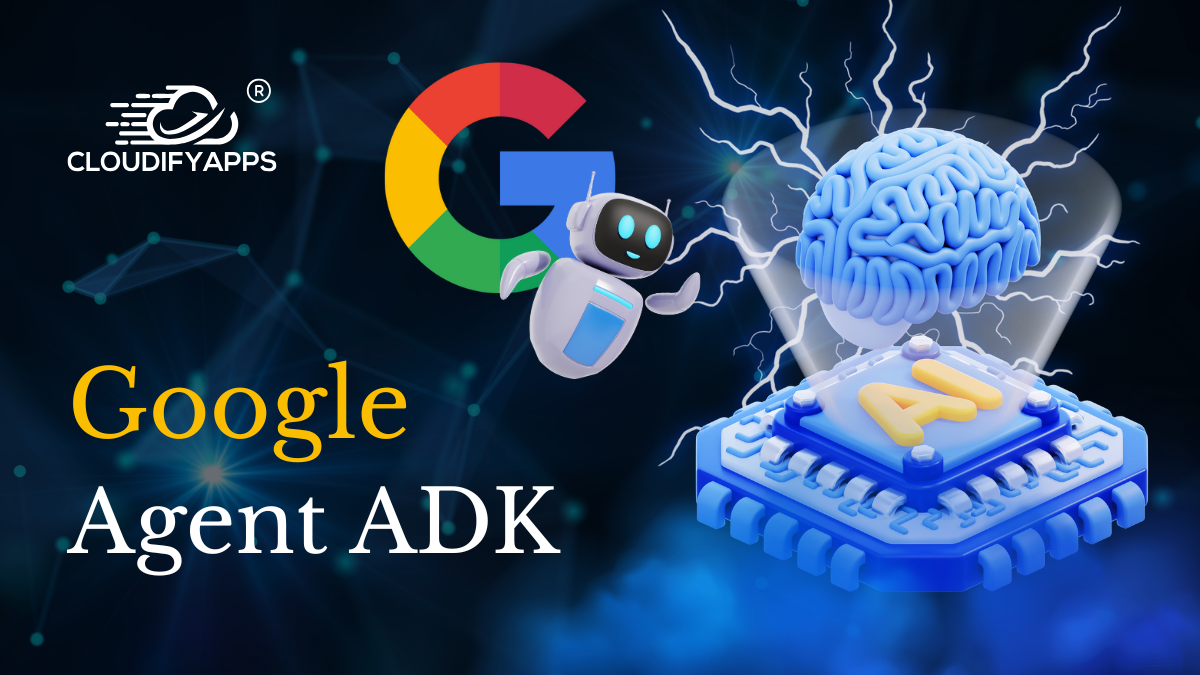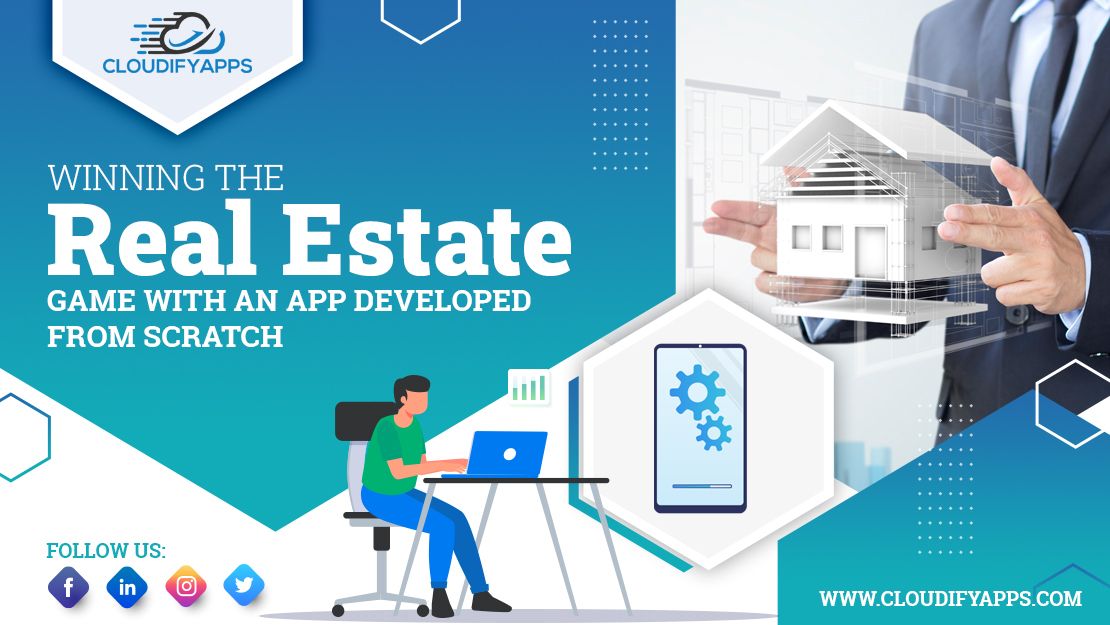
Build A Real-Estate Development App To Be A Shark In The Industry
Introduction
With the changes in our world and the new technologies that are emerging and enhancing every day, the real estate industry is one of the domains that is influenced by innovations. Virtual reality (VR), artificial intelligence (AI), CRM, digital transactions, and augmented reality (AR) are all being used to provide better service and experience to customers than ever before.
Customers are changing as well, and it's critical to be able to adapt to this shift and keep track of their demands and expectations to enter the niche successfully.
Everything is becoming more mobile, quicker, and accessible, which is why practically every business today has a website and an app. Real estate applications may perhaps one day completely replace brokers and agents by providing clients with all of the services they require in the palm of their hand.
According to Statista, an increasing number of people are downloading apps from Google and App Stores, indicating that the mobility of accessing different services is essential. If you want your startup to take off and become well-known in the real estate industry, you should consider developing a mobile application.
Read More: What are the Major Benefits that the Real Estate Industry Can Gain from Custom Software Development?
Why Are Real Estate Apps Becoming More And More Popular Day By Day?
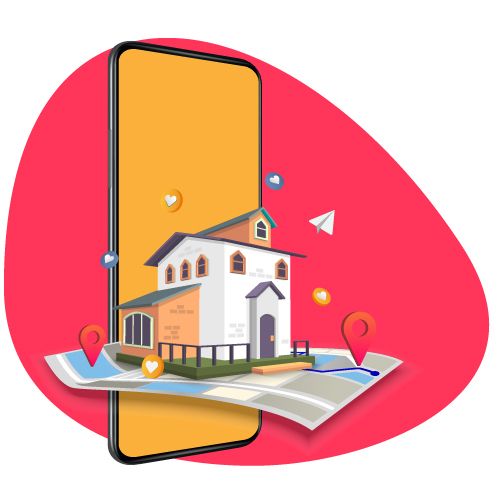
People are always moving out of their homes and seeking new ones to go into - this has always been the case. And the COVID-19 isn't a deal-breaker any longer.
The primary difference between, for example, 20 years ago and now is that consumers no longer require the assistance of real estate agents and brokers in real life. These are being replaced by mobile applications that are available at any time and do not involve any third parties. It's no surprise that individuals prefer fast access to an extensive database of homes to scheduling viewings all across town.
As a result, a traditional brokerage is declining in our digital era, prompting real estate specialists to predict a rise in technological expenditures shortly.
A Real Estate Mobile MVP's Must-Have Features
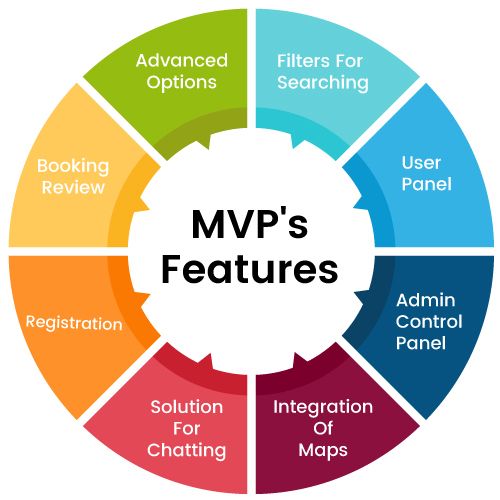
MVP stands for "minimum viable product." It signifies that this product has a small number of features and is manufactured in a short amount of time with minimal effort. However, the word "viable" implies that the product must execute the app's essential functions and allow early users to achieve their objectives. These should be basic features that would enable users to discover appropriate housing in the real estate industry in the case of a real estate app.
Filters For Searching
The first thing you should do on a real estate app is using a search engine.
It is preferable to have well-structured filters in addition to merely offering an engine to make the search more exciting and speedier. This is especially crucial for customers on the go who use the app on their phones (in queues, taxis, transport, etc.).
You may use filters such as:
● Location
● Type of property
● Price
● The construction year
● Neighbourhood
User Panel
Signup and login options should be available in the user panel. Users would have to register and have their identities verified. It should also have map views to see all of the housing listings. An interactive map might give information on transportation, schools, and other vital nearby places with the Map APIs. Apart from property information, history, photographs, adding favourite homes, and a calendar to monitor the history of visited properties, the database also includes information on brokers.
Admin Control Panel
Aside from integrating reporting and analytics, the admin panel is required for adding and deleting controlled properties. Another essential element of the admin panel is user management, which includes broker and client management. Depending on their activity, the administrator can add, modify, update, or block them. Revenue management allows administrators to keep track of and regulate overall revenue. Adding customer support management helps them provide better service, convenience, and security.
Integration of Maps
A real estate smartphone app without a map is difficult to fathom. Fortunately, it is not difficult to obtain. You do not need to provide your map solution. Instead, you may use a ready-made map solution from a third-party supplier like Google Maps or Mapbox.
Solution For Chatting
Instant communication is also crucial while looking for a place to stay. In a conversation, your user is more likely to send a message to a realtor than to phone one. Making a phone call makes locating the real estate asset more challenging. A chat option is another element that should be included in your real estate app.
Registration
Including registration in your app is a fantastic way to personalize it. After creating an account, users' search criteria and favourite offerings may be saved in a "Favorites" box.
By the way, implementing the registration functionality is much easier than it appears. Actually, you don't have to start from scratch. You can utilize the users' email addresses, contact information, or social media profiles instead (Facebook, Google Account, or Instagram).
Booking Review
Allowing consumers to see the time slots for apartment reviews online would also simplify their lives. This would eliminate making a phone call, increasing the likelihood of a user booking an appointment.
Advanced Options
Support for three-way communication by sharing broker and property profiles with multiple users can further improve collaboration.
In addition, detailed information about the neighbourhood, such as infrastructure and crime statistics, can improve user engagement and experience.
What Are The Necessary Steps That You Need To Follow For Developing A Real Estate Application From Scratch?
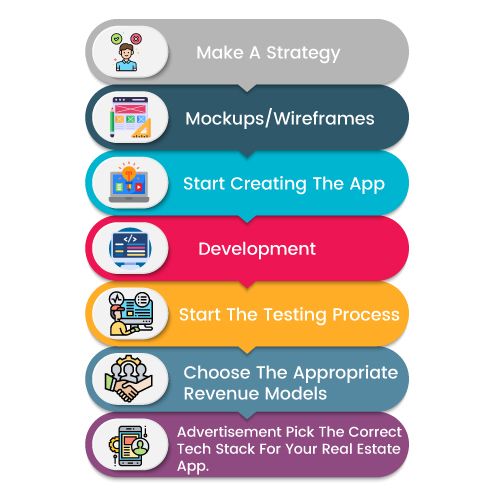
Make a Strategy
A comprehensive assessment of the project's core is the first step in the process of real estate app development. What is the goal of your real estate mobile application? Knowing about other apps might help with another aspect of app development: identifying and understanding the target audience. Do some research and check at the rivals for your app concept before rushing into app development blindly.
Mockups/Wireframes
A wireframe is a low-fidelity representation of your app's UI and UX that gives you a general idea of how the app works and flows without getting into the details of style and pattern. Your wireframes don't have to be fully featured; instead, focus on demonstrating the application's core features.
Start Creating The App
The allowed wire frames must first be polished by your UX and UI designers. This comprises, among other things, UI element positioning and construction, user flow design, and understanding of the importance of element hierarchy. At this stage, it's preferable to build high-fidelity mockups, which your engineers can subsequently transform into a working app. Users are more likely to interact with a mobile application that is simple, easy to use, and works quickly.
Development
Any mobile app developer begins developing code for the application's "first" version during the development phase. As your concept develops traction, your app will begin to operate, and you will be able to experience it. But don't leave everything to your devs. Use your real estate app development professionals' skills because communication is vital in the development process. Create unique interactions for every possible user interaction to see how your app is being used and how people are moving around. Once your app is live, you can use the data to learn more about your customers and optimize the design to build mobile app possible.
Start The Testing Process
Testing should ideally take place at the same time as development for any app development company in India. It's vital to test often to keep post-release costs low. To discover any severe faults or blunders as soon as possible, unit tests, user interface tests, and integration testing are all essential. Testing procedures might add time to the development process, but they can save time and money in the long run for delivery and updates.
Choose The Appropriate Revenue Models
You have several options for monetizing your real estate app. The most common and successful strategies will be discussed.
Premium Model - Providing additional paid premium services tailored to the needs of specific individuals is an excellent idea. For example, real estate brokers may have access to a wealth of demographic and customer behaviour data and competitive market analysis tools, and e-signature options.
Advertisement
Nowadays, advertisements are the most frequent way for any software to earn money. A real estate mobile app should have mortgage ads, bank home loan ads, furnishing ads, interior decoration service ads, property insurance ads, etc.
Pick The Correct Tech Stack For Your Real Estate App
In real estate mobile app development, the tech stack is critical. You'll need a solid tech stack to implement the capabilities described earlier in your app, making your real estate app robust and speedy.
Real Estate Apps Types
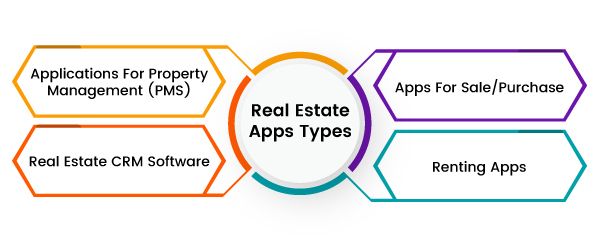
There are several field-specific sorts of real estate apps in addition to the buying/selling and renting options that spring to mind initially. Our list may assist you in better formulating the concept for your next endeavour - or provide you with one.
Apps For Sale/Purchase
This is the most frequent type of real estate app built by the mobile app development company. Most of them are multiple listing services (MLS), also known as multiple listing systems, which aggregate datasets from numerous real estate organizations. This provides a channel for agencies and homeowners to promote their offers while home buyers have quick access to all of them. They can locate each other by searching by area, providing neighbourhood descriptions, uploading images, and using other less prevalent capabilities. The two sides meet to finalize an agreement with or without real estate brokers.
Examples: Zillow and Trulia.
Renting Apps
A mobile rental app is a tool that assists users in finding rental lodging for long or short periods, such as a weekend, holiday, or work trip. The more criteria the app provides, the easier it is for customers to discover the appropriate lodging - by location, price, and amenities.
Examples: Airbnb, Booking.com, and Zillow Rentals.
Applications For Property Management (PMS)
Apps for property management give landlords capabilities to handle rent payments, utility payment collection, move-ins, and move-outs and a channel to interact with renters to automate everyday tasks and save time.
Examples: Buildium and InnQuest.
Real Estate CRM Software
CRM applications developed by the mobile app development company for real estate are tools for resolving business difficulties between real estate companies and their clients, whether they are home buyers or renters. CRM applications are designed to improve clients' experiences with businesses by maintaining continual contact with them, responding to their comments, and responding to their demands.
Examples: LionDesk and Contactually.
How Much Does It Cost To Develop A Real Estate App?
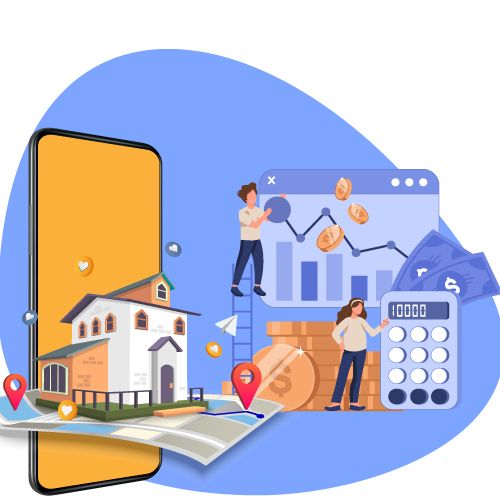
The cost of developing a real estate mobile app is affected by a variety of criteria, including the app's complexity, database, number of agents, buyers, and sellers, graphics, and innovative features. On the other hand, a real estate app will cost between $30,000 and $35,000 to build, with advanced features costing around $55,000.
Conclusion
The real estate business has seen considerable expansion recently. A real estate smartphone app is bound to be a hit since it speeds up and simplifies the process of purchasing or leasing a property, and it can please both buyers and brokers. However, make sure you use a system that is easy to scale and maintain to keep doing fantastic things as traffic grows. We can help you get started on creating the appropriate platform for your real estate business as a top real estate software development company.
Popular Tags
Recent Posts
Smart automation for cash-strapped startups
The modern data trinity: How medallion architecture, RAG, and data lakes revolutionize enterprise intelligence
Accelerating AI-Driven Development with Docker’s MCP Catalog & Toolkit
Building Intelligent Agent Teams with Google's ADK: A Developer's Guide
We are at






















